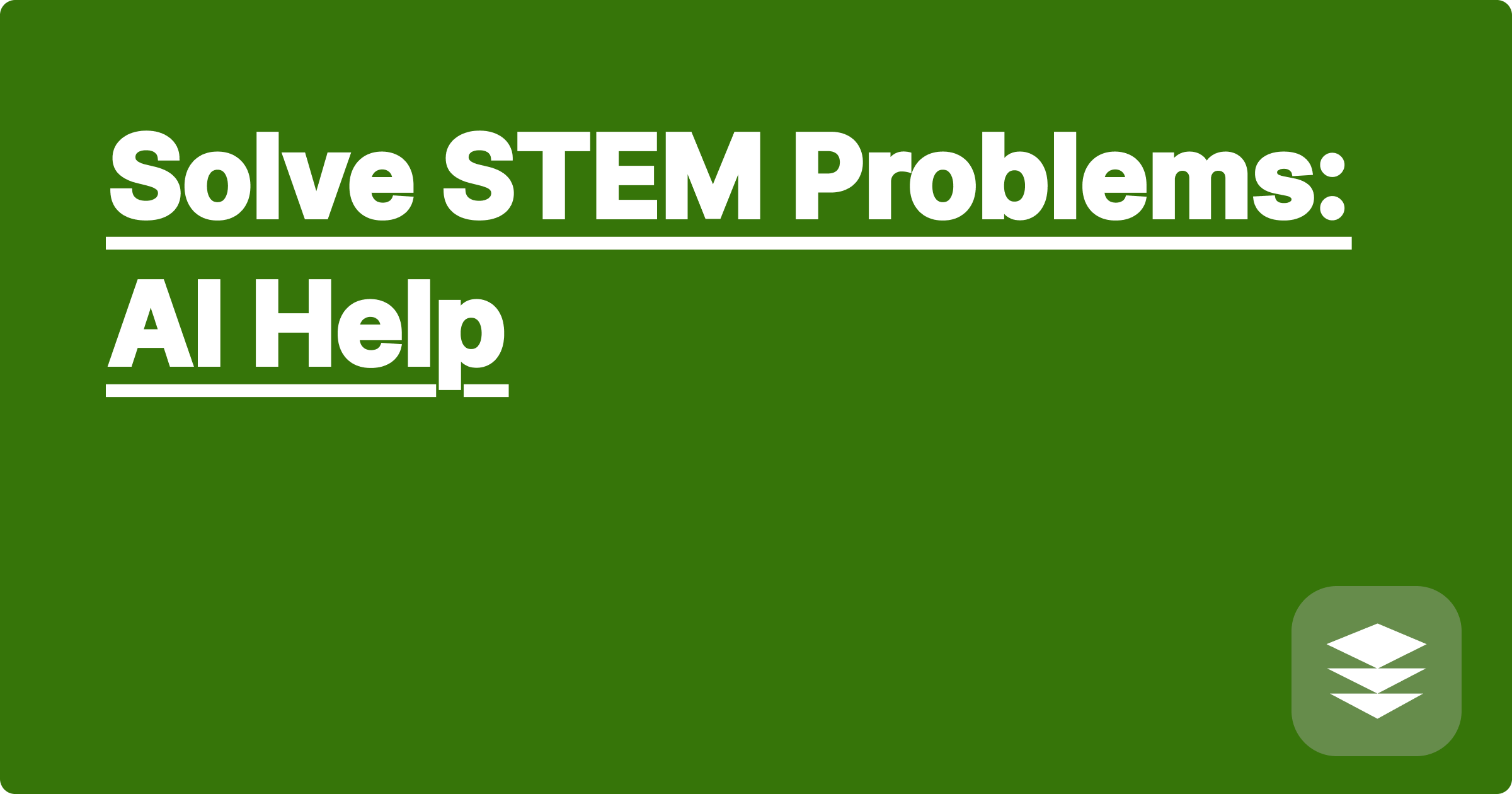
The world of STEM (Science, Technology, Engineering, and Mathematics) presents a constant stream of complex problems, demanding rigorous analysis, creative thinking, and often, significant computational power. From unraveling the mysteries of the universe to designing sustainable energy solutions, STEM professionals and students face intellectually stimulating challenges. Fortunately, the rise of artificial intelligence (AI) offers a powerful new toolkit for tackling these complex issues. AI can augment human capabilities, providing assistance with data analysis, complex calculations, hypothesis generation, and even writing code, ultimately accelerating the pace of discovery and innovation.
This emerging synergy between AI and STEM is particularly relevant for students and researchers navigating the complexities of their respective fields. AI tools can empower students to grasp difficult concepts, explore different approaches to problem-solving, and gain a deeper understanding of the subject matter. For researchers, AI can streamline workflows, automate tedious tasks, and unlock new avenues of inquiry, leading to breakthroughs and advancements. Embracing these tools is no longer optional but essential for staying competitive and pushing the boundaries of knowledge.
Many STEM problems involve intricate mathematical models, extensive datasets, and complex algorithms. Consider, for example, the challenge of predicting the trajectory of a projectile launched at a specific angle and velocity. This seemingly simple problem involves factors like gravity, air resistance, and the Earth's rotation, requiring a sophisticated understanding of Newtonian physics and differential equations. Similarly, analyzing large genomic datasets to identify disease markers necessitates advanced statistical methods and computational resources. These types of problems can be daunting, even for experienced researchers, highlighting the need for powerful tools that can simplify the process and enhance our ability to extract meaningful insights.
AI tools like ChatGPT, Claude, and Wolfram Alpha offer unique capabilities to address these complex STEM challenges. ChatGPT and Claude excel at natural language processing, enabling users to ask questions in plain English and receive comprehensive explanations, code examples, and even step-by-step solutions. Wolfram Alpha, on the other hand, specializes in computational knowledge and can perform complex calculations, symbolic manipulations, and data analysis. By leveraging these tools strategically, STEM students and researchers can significantly enhance their problem-solving capabilities.
Let’s consider the projectile motion problem mentioned earlier. To solve this using an AI tool, you might start by asking ChatGPT or Claude a question like, "How do I calculate the trajectory of a projectile launched at a 45-degree angle with an initial velocity of 20 m/s, considering air resistance?" The AI will likely respond with the relevant equations of motion, explaining the role of each variable. It might even provide a code snippet in Python or another language to perform the calculations. You could then modify the code to input your specific parameters and visualize the trajectory. Alternatively, you could use Wolfram Alpha by entering a query like "projectile trajectory 45 degrees 20 m/s air resistance." Wolfram Alpha would then directly compute the trajectory and display the results graphically.
Consider the task of modeling the growth of a bacterial population. You could use ChatGPT to understand the underlying logistic growth model and generate a Python script to simulate the population dynamics. The script might involve parameters like the initial population size, growth rate, and carrying capacity. By adjusting these parameters, you can explore different scenarios and visualize how the population changes over time. Another example involves analyzing experimental data. Suppose you have a dataset of temperature readings over several months. You could use Wolfram Alpha to perform statistical analysis, calculate the mean, standard deviation, and identify any trends or patterns in the data. This could help you draw conclusions about seasonal variations or long-term climate change. Furthermore, you could use ChatGPT to help you understand the underlying physics of heat transfer and how it relates to your observed data.
To effectively integrate AI into your STEM workflow, it's crucial to develop a strong understanding of the underlying concepts and principles. AI tools should be seen as assistants, not replacements, for critical thinking and problem-solving skills. Always verify the information provided by AI and cross-reference it with reliable sources. Don't hesitate to experiment with different AI tools and explore their unique strengths and weaknesses. Develop a habit of asking clear and concise questions to get the most accurate and relevant responses. Finally, remember that ethical considerations are paramount. Use AI responsibly and avoid plagiarism by properly citing any information or code generated by these tools.
In conclusion, AI offers transformative potential for STEM education and research. By embracing these powerful tools and integrating them strategically into your workflow, you can unlock new levels of understanding, accelerate the pace of discovery, and contribute to solving some of the world's most pressing challenges. Start exploring these tools today and discover how they can empower you on your STEM journey. Don't be afraid to experiment and learn from the vast resources available. The future of STEM is intertwined with AI, and by embracing this synergy, you can position yourself at the forefront of innovation.
Ace STEM Exams: AI Study Planner
AI for Lab Data: Analysis Made Easy
AI in Engineering: Boost Your R&D